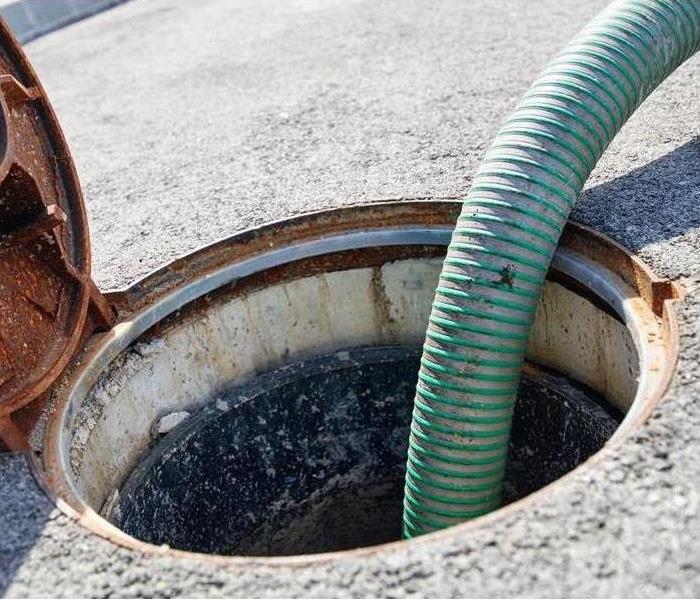5 Steps To Take After a Sewer Backup
4/1/2024 (Permalink)
A sewer backup may be one of the most damaging problems with which you have to deal as a business owner or manager in Park City, UT. Not only is it a disgusting process, but you must also keep employees and customers safe from exposure to germs and chemicals. There are specific steps to keep everyone and your building as safe as possible during sewage cleanup.
Safety Steps For Sewage Cleanup
- Protect Yourself Against Various Hazards
First, it's essential to protect yourself by wearing personal protective equipment. Available PPE includes hair covers, safety goggles, respirators, rubber gloves, coveralls and waterproof shoe covers. Most of this gear can be bought in disposable form to better prevent cross-contamination. The amount of PPE necessary depends on the severity of the sewage. However, if there is a question, more is better than less.
Also, do not walk into any standing water where electrical components are plugged in. You will need to shut off the power to the area because an electrical current can pass through the water. Merely stepping a foot into the room could be extremely hazardous. If you can't safely navigate to the breaker box, call the power company or experienced electrician to turn the electricity off before you take any further action.
- Try Unclogging the Blockage
Next, you must unclog the sewer blockage and stop any running water. Shut off the water supply at the source or opt for the entire building. It could take the work of professionals if the backup is down the line a bit. If you have a flooded toilet, you can use a plunger or drain snake to unclog it yourself.
- Extract All Standing Water
Sewage water contains various bacteria and other contaminants that can quickly spread. During the sewage cleanup process, it's essential to extract the standing water as soon as possible. Standing water can also damage fast, so time is of the essence. If you decide to conquer the task yourself, a wet/dry vacuum can efficiently remove the water and smaller debris.
- Dry the Area and Contents
Once you have extracted all of the standing water, it's time to dry everything in the affected area as quickly as possible. This could mean tearing out water-damaged flooring (carpet will probably be ruined) and even some drywall. You may also need to remove most if not all of your contents from the area to dry them outside and to thoroughly clean them and the affected area.
You can use fans, heaters and fresh air to dry everything. Water damage restoration professionals can dry an area faster with industrial-grade fans and other equipment.
- Sanitize the Area and Contents
Finally, everything must be thoroughly cleaned and sanitized. Be sure to get into tiny spaces, even walls and furniture that have come in contact with the water and contaminants. After experiencing a flooded toilet or another type of sewer backup, performing a thorough sewage cleanup is critical. This can be a very labor-intensive job, even for a small amount of standing water. However, taking time to go through each of these steps can keep everyone safe and prevent avoidable damage to your building and its contents.





 24/7 Emergency Service
24/7 Emergency Service
